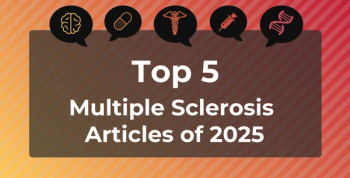
GLP-1s Show Promise for Patients With Hidradenitis Suppurativa and Obesity
Key Takeaways
- Glucagon-like peptide-1 receptor agonists (GLP-1 RAs) may reduce hidradenitis suppurativa severity, flares, and pain, especially in obese patients.
- Improvements were observed in Hidradenitis Suppurativa Physician’s Global Assessment scores, pain, and flare frequency, even without changes in other treatments.
Glucagon-like peptide-1 (GLP-1) receptor agonists show promise in reducing hidradenitis suppurativa severity and pain, especially in patients with obesity.
Glucagon-like peptide-1 receptor agonists (GLP-1 RAs) may offer significant benefits for patients with
Hidradenitis suppurativa is a chronic inflammatory skin condition that is often linked with overweight and obesity, which affect half of all patients with the disease. “Weight loss, through diet or obesity surgery, has a beneficial effect on [hidradenitis suppurativa] in most patients; however, achieving meaningful reductions is challenging,” the authors explained.
The increasing use of GLP-1 RAs for weight management has opened a new avenue for research into their potential impact on hidradenitis suppurativa due to their anti-inflammatory properties.
Previous research published in 2024 showed that patients with hidradenitis suppurativa and obesity who were treated with semaglutide experienced improved quality of life and a reduction in their hidradenitis suppurativa flare-ups.2
This new research, which spanned from 2017 to 2024, included 66 adult patients with hidradenitis suppurativa who were treated with a GLP-1 RA for at least 3 months across 15 centers in France. The median follow-up was 18.5 months. The median (IQR) age was 46.0 (37.5-54.0) years, and the median (IQR) body mass index was 39.4 (32.9-45.0).
The majority of patients (86%) had diabetes, and all had a Hidradenitis Suppurativa Physician’s Global Assessment (HS-PGA) score of 1 or higher. The most commonly prescribed GLP-1 RA was semaglutide (n = 48), followed by dulaglutide (n = 13) and liraglutide (n = 5).
In addition to receiving a GLP-1, more than half (53%) were receiving treatment for their hidradenitis suppurativa: suspensive antibiotic therapy (n = 23), broad-spectrum antibiotics (n = 3), or a biologic (n = 9).
Researchers tracked several key outcomes at 6 months and at the final follow-up, including HS-PGA scores, flare frequency, pain (as measured by a numerical rating scale), and quality of life. At the 6-month mark, 54% of patients had a 1-point or higher reduction in their HS-PGA score, and 12% had a 2-point or higher reduction.
The positive trends continued over time, with results at the final follow-up showing an even greater improvement. For instance, 62% of patients experienced a 1-point or higher reduction in their HS-PGA score. In addition, 60% of patients reported a decrease in pain, and 67% saw a reduction in the frequency of their hidradenitis suppurativa flares. The study also noted that these positive changes were observed even in a subgroup of patients whose other hidradenitis suppurativa treatments remained unchanged, suggesting a direct effect of the GLP-1 RA.
The authors speculated that the benefits of GLP-1 RAs could be a result of both weight loss, which reduces friction and inflammation, and a direct anti-inflammatory effect of the drugs themselves. They note that GLP-1 RAs have been shown to reduce inflammatory cytokines and may even promote skin healing.
Although the findings are promising, the researchers highlight the need for further investigation. The study’s retrospective design and the fact that some patients were on other hidradenitis suppurativa medications at the same time prevent definitive conclusions.
“GLP-1 RAs offer promise for patients with [hidradenitis suppurativa] and obesity and potentially for patients without obesity through immunological effects,” the authors concluded. “Randomized clinical trials are warranted to confirm the role of GLP-1 RAs in [hidradenitis suppurativa] management.”
References
1. Gouvrion L, Delage M, Villani AP, et al; for the IGDO (Institut de Dermatologie du Grand-Ouest); for the HS-France group of the French Society of Dermatology. Glucagon-like peptide-1 receptor agonists in hidradenitis suppurativa. JAMA Dermatol. Published online August 13, 2025. doi:10.1001/jamadermatol.2025.2723
2. Santoro C. Semaglutide improves hidradenitis suppurativa in patients with obesity. AJMC®. September 24, 2024. Accessed August 14, 2025.
Newsletter
Stay ahead of policy, cost, and value—subscribe to AJMC for expert insights at the intersection of clinical care and health economics.







































